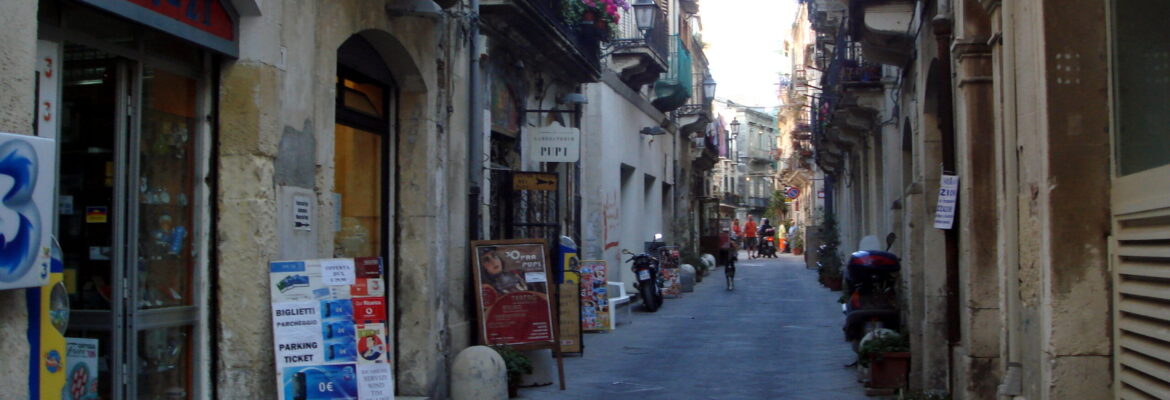Syracuse was one of the first cities in eastern Sicily to welcome Jews. The situation changed in late 1492 when all of the Sicilian Jews were forced to leave the island after the long coexistence: between one and three thousand Jews left Syracuse, out of the overall population of 12-14 thousand and the entire Giudecca District on the Island of Ortigia was left empty. In the Akradina District the graveyard and the underground burial chambers containing inscriptions and oil lamps decorated with the menorah are all that is left.
The Giudecca (the Jewish quarter)is a quadrilateral area bordered to the west by Via della Giudecca, to the south by Via Larga, by the sea to the east, and criss-crossed by parallel streets: Via dell’Olivo, Vicolos I II, III and IV Giudecca, Vicolo dell’Arco and Via Minniti. It has retained the same network of streets ever since: low-rise buildings with one or two storeys at most, the hospital, the ritual baths, the synagogue (where the church of San Giovanni Battista now stands), known by the Arab name meschita.
The mediaeval cemetery was on a plot near Porto Piccolo (the Small Port) the Bishop of Cefalù rented. After the expulsion, the tombstones were used to build the fortifications of the strait separating Ortigia from the main island and came to light when they were demolished in the late twentieth century. Four tombstones can be found in the courtyard of the Regional Gallery at Palazzo Bellomo (Via Capodieci, 14-16, for information and visits: http://www.regione.sicilia.it/beniculturali/palazzobellomo/info.html). Others were placed together with those found at sea in the 1950s, fifteen in total – now in very bad conditions- and placed along the pathway leading into the catacombs of Vigna Cassia. The Paolo Orsi Regional Archaeological Museum (Viale Teocrito 66, for information and visits: http://www.regione.sicilia.it/beniculturali/museopaoloorsi/infoENG.htm) has showcased tombstone inscriptions, oil lamps with menorah magic and metal plates in the Jewish style.

